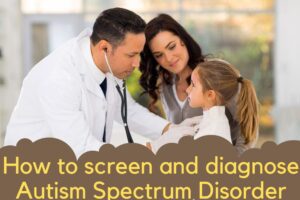Autism spectrum disorder (ASD) is a complex neurodevelopmental condition, and its exact causes are not fully understood. However, researchers believe that a combination of genetic, environmental, and neurological factors contribute to the development of autism. Here are some key points regarding the potential causes of autism in the brain:
1. Genetic Factors:
– Hereditary Influence: There is strong evidence that genetics play a significant role in autism. Many genes have been implicated in ASD, and it’s believed that combinations of genetic variations contribute to the risk of developing autism.
– De Novo Mutations: Some individuals with autism have genetic mutations that are not inherited from their parents but occur spontaneously (de novo mutations). These mutations can affect brain development and function.
– Gene Expression: Changes in gene expression patterns during brain development may also contribute to the development of autism.
2. Brain Development:
– Neurological Wiring: The brain of a person with autism may have differences in how neurons are connected and communicate with each other. This can affect various brain functions, including social interaction, communication, sensory processing, and behavior.
– Early Brain Development: Research suggests that disruptions in early brain development, particularly during prenatal and early postnatal periods, can contribute to the development of autism.
– Brain Structure: Some studies have found differences in brain structure and size in individuals with autism, such as differences in the size of certain brain regions or alterations in the pattern of neural connections.
3. Environmental Factors:
– Prenatal Environment: Factors during pregnancy, such as exposure to certain environmental toxins, maternal infections, medications, and maternal health conditions, may influence brain development and increase the risk of autism.
– Perinatal and Postnatal Factors: Complications during birth, exposure to certain chemicals or pollutants after birth, and early life experiences can also impact brain development and contribute to the risk of autism.
4. Neurotransmitters and Brain Function:
– Neurotransmitter Imbalance: Some research suggests that abnormalities in neurotransmitter systems, such as serotonin, dopamine, and gamma-aminobutyric acid (GABA), may be associated with autism. These neurotransmitters play key roles in brain function, mood regulation, and behavior.
– Brain Connectivity: Studies using neuro imaging techniques have shown differences in brain connectivity patterns in individuals with autism, indicating altered neural networks and information processing in the brain.
5. Interaction of Multiple Factors:
It’s important to note that autism likely arises from the complex interplay of multiple factors, including genetic predisposition, environmental influences, and developmental processes. The specific combination of factors and their interactions may vary among individuals with autism, contributing to the heterogeneity of the disorder.
Overall, ongoing research efforts are focused on understanding the underlying mechanisms of autism in the brain, identifying biomarkers, and developing targeted interventions to support individuals with autism and their families.
Genetic Factors of autism in brain.
Genetic factors play a significant role in the development of autism spectrum disorder (ASD). Here are some key points regarding the genetic factors associated with autism in the brain:
1. Hereditary Influence:
– Family History: Autism tends to run in families, suggesting a hereditary component. If a family has one child with ASD, the chance of another sibling also having ASD is higher than in the general population.
– Twin Studies: Studies of identical twins (who share nearly 100% of their genes) have shown a higher concordance rate for ASD compared to fraternal twins (who share about 50% of their genes). This indicates a strong genetic influence.
2. Genetic Variations and Mutations:
– Common Variants: While no single gene is responsible for causing autism, researchers have identified common genetic variants that may contribute to the risk of ASD. These variants are often involved in brain development, synaptic function, and communication between neurons.
– Rare Mutations: In some cases, individuals with autism have rare genetic mutations or copy number variations (CNVs) that are associated with the disorder. These mutations can affect the structure or function of proteins involved in neural development and connectivity.
– De Novo Mutations: De novo mutations are genetic changes that occur spontaneously and are not inherited from parents. They can arise in genes critical for brain development and may increase the risk of autism when present.
3. Genetic Syndromes and Disorders:
– Syndromic Autism: Some genetic syndromes are associated with a higher risk of autism. For example, Fragile X syndrome, Rett syndrome, Tuberous sclerosis, and Phelan-McDermid syndrome are genetic disorders that often co-occur with ASD.
– Single Gene Disorders: Certain single gene disorders, such as Angelman syndrome and Smith-Lemli-Opitz syndrome, can also present with autistic features.
4. Polygenic Risk:
– Polygenic Inheritance: Autism is considered a polygenic disorder, meaning that multiple genes contribute to its risk, each with a small effect. These genes may interact with each other and with environmental factors to influence brain development and functioning.
5. Gene Expression and Regulation:
– Epigenetics: Epigenetic factors, such as DNA methylation and histone modifications, can influence gene expression without altering the underlying DNA sequence. Changes in epigenetic regulation may contribute to the development of autism.
6. Genetic Testing and Research:
– Genetic Testing: Genetic testing, including chromosomal microarray analysis (CMA) and whole-exome sequencing (WES), can identify genetic variants and mutations associated with autism. This information can help with diagnosis, prognosis, and personalized treatment approaches.
– Research Advances: Ongoing research efforts are focused on identifying specific genes and genetic pathways involved in autism, understanding how genetic variations impact brain development and function, and exploring potential targeted therapies based on genetic findings.
Overall, genetic factors are critical in the etiology of autism, but they interact with environmental influences and other non-genetic factors to contribute to the complexity and variability of ASD presentations. Understanding the genetic underpinnings of autism can inform diagnostic practices, treatment strategies, and genetic counseling for individuals and families affected by the disorder.
Brain Development Of Child In The Autism.
The development of autism in the brain involves complex interactions between genetic predispositions and environmental influences during critical periods of neural development. Here are key points regarding brain development and its connection to autism:
1. Early Brain Development:
– Prenatal Period: Brain development begins in the prenatal period, with the formation of neural stem cells, neural migration, and the establishment of basic brain structures. During this time, genetic factors and environmental influences can shape neural development and circuitry.
– Critical Periods: Critical periods are sensitive periods during development when neural circuits are refined and optimized through experience-dependent processes. Disruptions during these critical periods can impact brain connectivity and function.
2. Neuronal Connectivity and Synaptic Function:
– Neuronal Wiring: The brain of a person with autism may show differences in neuronal connectivity and wiring. This includes alterations in the formation and pruning of synapses, which are crucial for communication between neurons.
– Synaptic Plasticity: Synaptic plasticity refers to the ability of synapses to change and adapt in response to experience. It plays a role in learning, memory, and neural circuitry development. Dysregulation of synaptic plasticity has been implicated in autism.
3. Brain Regions and Networks:
– Social Brain Networks: Brain regions involved in social cognition and communication, such as the prefrontal cortex, amygdala, and mirror neuron system, may show atypical development or connectivity in individuals with autism. These regions are important for understanding others’ emotions, intentions, and social cues.
– Sensory Processing: Differences in sensory processing and integration may contribute to sensory sensitivities often observed in individuals with autism. Brain regions responsible for sensory processing, such as the thalamus and sensory cortices, may exhibit altered functioning.
4. White Matter and Gray Matter Differences:
– White Matter: White matter consists of myelinated nerve fibers that facilitate communication between different brain regions. Studies have found differences in white matter integrity, connectivity, and organization in individuals with autism, suggesting disruptions in long-range neural networks.
– Gray Matter: Gray matter includes neuronal cell bodies and synapses. Changes in gray matter volume, density, or distribution have been reported in various brain regions of individuals with autism, although findings can be variable across studies.
5. Neurotransmitter Systems:
– Serotonin and Dopamine: Abnormalities in neurotransmitter systems, such as serotonin and dopamine, have been implicated in autism. These neurotransmitters play roles in mood regulation, reward processing, and social behavior.
– Gamma-Aminobutyric Acid (GABA): GABA is an inhibitory neurotransmitter that regulates neural excitability. Imbalances in GABAergic signaling have been linked to altered brain functioning in autism.
6. Environmental Influences:
– Prenatal and Early Postnatal Exposures: Environmental factors during pregnancy and early life, such as maternal infections, exposure to toxins or chemicals, and perinatal complications, can influence brain development and contribute to autism risk.
– Early Social Experiences: Social interactions and experiences during infancy and early childhood are critical for shaping neural circuits involved in social communication and bonding. Atypical social experiences or difficulties in social engagement may impact brain development in individuals with autism.
Understanding the intricate interplay between genetic factors, neural development, and environmental influences is essential for unraveling the complexities of autism in the brain. Research in this area aims to identify specific mechanisms underlying brain alterations in autism and develop targeted interventions to support brain development and improve outcomes for individuals with ASD.
Environmental Factors Of Autism
Environmental factors can play a role in the development of autism spectrum disorder (ASD) by interacting with genetic predispositions and influencing brain development. Here are key points regarding environmental factors and their connection to autism in the brain:
1. Prenatal Environment:
– Maternal Health: Maternal health during pregnancy can impact fetal brain development. Factors such as maternal infections, immune system activation, nutritional status, stress levels, and exposure to toxins or medications may influence the risk of autism.
– Prenatal Exposures: Exposure to certain environmental factors during pregnancy, such as air pollution, pesticides, heavy metals, and endocrine-disrupting chemicals, has been associated with an increased risk of autism or neurodevelopmental disorders.
– Medications: Some medications taken during pregnancy, such as certain antidepressants (e.g., SSRIs) or antiepileptic drugs, have been studied for their potential links to autism risk. However, the relationship between medication use and autism is complex and requires further research.
2. Perinatal and Early Postnatal Factors:
– Birth Complications: Complications during birth, such as preterm birth, low birth weight, oxygen deprivation (hypoxia), or neonatal jaundice, may contribute to neurodevelopmental challenges and increase the risk of autism.
– Early Life Experiences: Early social experiences, caregiving environments, and sensory stimuli can shape neural circuits and brain functioning. Positive social interactions, responsive caregiving, and enriched environments may support healthy brain development, while adversity or neglect can impact developmental trajectories.
3. Sensory and Environmental Sensitivities:
– Sensory Processing Differences: Individuals with autism often have sensory sensitivities or atypical responses to sensory stimuli. Environmental factors such as loud noises, bright lights, textures, or smells may trigger sensory overload or discomfort.
– Sensory-Based Interventions: Interventions targeting sensory processing, such as sensory integration therapy or sensory diets, aim to help individuals with autism manage sensory challenges and regulate their responses to environmental stimuli.
4. Nutritional Factors:
– Dietary Influences: Some studies have explored the role of nutrition in autism, including dietary patterns, nutrient deficiencies, and gut-brain interactions. For example, abnormalities in gut microbiota composition have been observed in individuals with autism, leading to investigations into the gut-brain axis and potential dietary interventions.
– Supplements and Dietary Interventions: Certain dietary supplements (e.g., omega-3 fatty acids, vitamin D) or specialized diets (e.g., gluten-free, casein-free) have been investigated for their potential effects on autism symptoms or behaviors. However, evidence regarding their efficacy is mixed, and individual responses may vary.
5. Social and Behavioral Experiences:
– Social Interaction and Communication: Social experiences and interactions play a crucial role in brain development, particularly in areas related to social cognition, empathy, theory of mind, and language development. Difficulties in social communication and interaction are hallmark features of autism.
– Early Intervention and Social Skills Training: Early intervention programs and social skills training aim to support social and communication development in children with autism, providing structured opportunities for learning and interaction.
6. Educational and Therapeutic Environments:
– Educational Supports: Access to appropriate educational environments, individualized education plans (IEPs), and evidence-based interventions (e.g., Applied Behavior Analysis, speech therapy, occupational therapy) can positively impact cognitive, social, and emotional development in individuals with autism.
– Therapeutic Approaches: Behavioral interventions, sensory-based therapies, play-based therapies, and cognitive-behavioral strategies are among the therapeutic approaches used to address autism symptoms, promote skill development, and support overall well-being.
7. Continued Research and Understanding:
– Research Efforts: Ongoing research is focused on understanding how environmental factors interact with genetic vulnerabilities to influence autism risk and presentation. This includes studies on gene-environment interactions, epigenetics, neuroplasticity, and the impact of early interventions and supportive environments.
– Multifaceted Approaches: Given the multifactorial nature of autism, interventions and supports often involve a multifaceted approach that considers genetic, environmental, developmental, and behavioral factors. Personalized and holistic approaches are important for optimizing outcomes and quality of life for individuals with ASD.
Neurotransmitters play a crucial role in brain function, including the regulation of mood, behavior, cognition, and communication between neurons. Abnormalities in neurotransmitter systems have been implicated in autism spectrum disorder (ASD). Here’s how neurotransmitters and brain function relate to autism in the brain:
1. Serotonin:
– Role in Autism: Serotonin is involved in mood regulation, social behavior, and emotional processing. Alterations in serotonin signaling have been observed in individuals with autism, and abnormalities in serotonin receptors and transporters have been identified in brain studies.
– Implications: Dysregulation of serotonin levels or function may contribute to difficulties in social interaction, emotional expression, repetitive behaviors, and sensory processing often seen in autism.
2. Dopamine:
– Role in Autism: Dopamine plays a role in reward processing, motivation, attention, and motor control. Changes in dopamine neurotransmission have been associated with certain traits and behaviors in autism, such as restricted interests, repetitive behaviors, and sensory seeking or aversion.
– Implications: Altered dopamine levels or receptor activity may influence the expression of autism symptoms and impact cognitive flexibility, response to rewards, and the development of repetitive behaviors.
3. Gamma-Aminobutyric Acid (GABA):
– Role in Autism: GABA is the primary inhibitory neurotransmitter in the brain, regulating neural excitability and maintaining balance in neural circuits. Dysfunction in GABAergic signaling has been implicated in autism, with studies suggesting alterations in GABA receptors and interneurons in individuals with ASD.
– Implications: GABA abnormalities may contribute to sensory processing differences, anxiety, seizures, and disruptions in neural synchronization observed in autism.
4. Glutamate:
– Role in Autism: Glutamate is the main excitatory neurotransmitter in the brain, involved in synaptic plasticity, learning, and memory. Imbalances in glutamatergic neurotransmission have been reported in autism, with alterations in glutamate receptors, transporters, and synaptic transmission.
– Implications: Glutamate dysregulation may impact neural connectivity, brain circuitry development, and cognitive functions such as attention, executive function, and information processing in individuals with ASD.
5. Oxytocin:
– Role in Autism: Oxytocin is often referred to as the “bonding hormone” and plays a role in social bonding, trust, empathy, and social behavior. Research suggests that dysfunctions in the oxytocin system may contribute to social difficulties and interpersonal challenges in autism.
– Implications: Oxytocin-based interventions, such as oxytocin administration or oxytocin receptor modulation, have been investigated as potential treatments to improve social functioning and communication in individuals with ASD.
6. Other Neurotransmitters and Systems:
– Norepinephrine: Norepinephrine is involved in arousal, attention, and stress response. Dysregulation of the noradrenergic system has been hypothesized to contribute to hyperactivity, anxiety, and emotional reactivity in autism.
– Endogenous Cannabinoids (Endocannabinoids): Endocannabinoid signaling plays a role in modulating neurotransmission, mood, pain perception, and appetite. Some studies have explored the endocannabinoid system in autism, although findings are preliminary and require further investigation.
– Neurotransmitter Interactions: The interactions and balance between various neurotransmitter systems (e.g., excitatory vs. inhibitory, monoamines, neuropeptides) are critical for overall brain function and may influence the expression of autism-related behaviors and symptoms.
Understanding the role of neurotransmitters and their impact on brain function in autism is an active area of research. Targeted interventions that modulate neurotransmitter systems or restore neurochemical balance may hold promise for addressing specific aspects of autism symptomatology and improving overall neurodevelopmental outcomes.
The development of autism spectrum disorder (ASD) involves complex interactions between multiple factors, including genetic predispositions, environmental influences, and neurological processes. Here’s how these factors interact to contribute to autism in the brain:
1. Genetic Predispositions:
– Polygenic Inheritance: Autism is considered a polygenic disorder, meaning that multiple genes contribute to its risk. These genes may interact with each other and with environmental factors to influence brain development and functioning.
– Gene-Environment Interactions: Genetic predispositions can interact with environmental factors during critical periods of development, such as prenatal and early postnatal stages, leading to alterations in neural circuits, neurotransmitter systems, and synaptic function.
2. Environmental Influences:
– Prenatal Exposures: Environmental factors during pregnancy, such as maternal infections, toxins, medications, and stress, can impact fetal brain development and increase the risk of autism. These exposures may interact with genetic vulnerabilities to influence neural connectivity and function.
– Early Life Experiences: Social and sensory experiences during infancy and early childhood shape brain development and synaptic plasticity. Positive social interactions, early interventions, and enriched environments can support healthy neurodevelopment, while adverse experiences or neglect may contribute to developmental challenges.
3. Neurological Processes:
– Neurotransmitter Systems: Abnormalities in neurotransmitter systems, including serotonin, dopamine, GABA, and glutamate, have been observed in autism. Dysregulation of neurotransmitters can affect synaptic transmission, neural circuitry, and brain function, contributing to autism-related behaviors and symptoms.
– Neural Connectivity: Altered neuronal connectivity, synaptic pruning, and brain network organization have been reported in individuals with autism. Differences in white matter integrity, gray matter volume, and functional connectivity may impact information processing, sensory integration, and cognitive functions.
4. Epigenetic Mechanisms:
– Epigenetic Modifications: Epigenetic factors, such as DNA methylation, histone modifications, and non-coding RNAs, regulate gene expression without altering the DNA sequence. Epigenetic changes can result from gene-environment interactions and may contribute to the development of autism by influencing neural development, synaptic plasticity, and neurochemical pathways.
5. Immune System and Inflammation:
– Immune Dysregulation: Immune system abnormalities and inflammatory responses have been implicated in autism. Immune dysregulation during prenatal or early postnatal periods can affect neuroinflammation, cytokine signaling, and neurodevelopmental processes, potentially contributing to autism risk and pathophysiology.
6. Heterogeneity and Subtypes:
– Individual Variability: The interaction of multiple factors results in the heterogeneity of autism presentations. Individuals with ASD may exhibit diverse phenotypes, ranging from mild to severe symptoms, based on the combination of genetic, environmental, and neurological influences.
– Subtypes and Endophenotypes: Research aims to identify subtypes or endophenotypes of autism that reflect distinct biological pathways, neural signatures, or clinical profiles. Understanding these subtypes can guide personalized interventions and targeted treatments based on underlying mechanisms.
7. Response to Interventions:
– Individualized Approaches: Given the multifactorial nature of autism, interventions and therapies are often individualized to address specific needs, strengths, and challenges. Early intervention, behavioral therapies, educational supports, and pharmacological treatments may target different aspects of autism based on the interaction of multiple factors.
Overall, the interaction of genetic, environmental, and neurological factors contributes to the complexity of autism in the brain. Research efforts continue to unravel these interactions, identify biomarkers, and develop personalized interventions that consider the unique profile of each individual with ASD.
Frequently Asked Questions about What Causes Autism in the Brain
1. What are the primary factors believed to contribute to autism in the brain?
Autism is considered a complex neurodevelopmental disorder influenced by a combination of genetic, environmental, and neurological factors.
2. Are there specific genes associated with autism in the brain?
While no single gene is responsible for autism, researchers have identified numerous genetic variations and mutations that may increase susceptibility to the condition.
3. How do these genetic factors impact the brain in individuals with autism?
Genetic variations associated with autism can disrupt normal brain development, affecting areas involved in social communication, sensory processing, and repetitive behaviors.
4. Can environmental factors contribute to the development of autism in the brain?
Environmental factors, such as prenatal exposure to certain toxins, maternal health conditions, and complications during pregnancy or childbirth, may influence brain development and increase the risk of autism.
5. Are there abnormalities in the structure or function of the brain observed in individuals with autism?
Neuroimaging studies have revealed differences in brain structure, connectivity, and activity patterns in individuals with autism, particularly in regions involved in social cognition, such as the amygdala and prefrontal cortex.
6. Do neurotransmitter imbalances play a role in autism in the brain?
Dysregulation of neurotransmitters, such as serotonin, dopamine, and glutamate, has been implicated in autism and may contribute to alterations in neural signaling and behavior.
7. How does sensory processing differ in the brains of individuals with autism?
Many individuals with autism experience sensory processing differences, characterized by heightened sensitivity or diminished responsiveness to sensory stimuli. These differences may stem from abnormalities in sensory processing pathways in the brain.
8. Are there prenatal or early developmental factors that affect brain development in autism?
Factors such as maternal immune activation, gestational complications, and early disruptions in synaptic pruning and connectivity during critical periods of brain development may contribute to the onset of autism.
9. Can abnormalities in neural circuits contribute to the symptoms of autism?
Disruptions in the development and function of neural circuits involved in social communication, emotional regulation, and executive function are thought to underlie the core symptoms of autism.
10. Are there ongoing research efforts to better understand the brain mechanisms underlying autism?
Yes, researchers continue to investigate the intricate interplay between genetic, environmental, and neurological factors in autism, employing advanced neuroimaging techniques, genetic studies, and experimental models to elucidate the underlying brain mechanisms and inform potential interventions.





